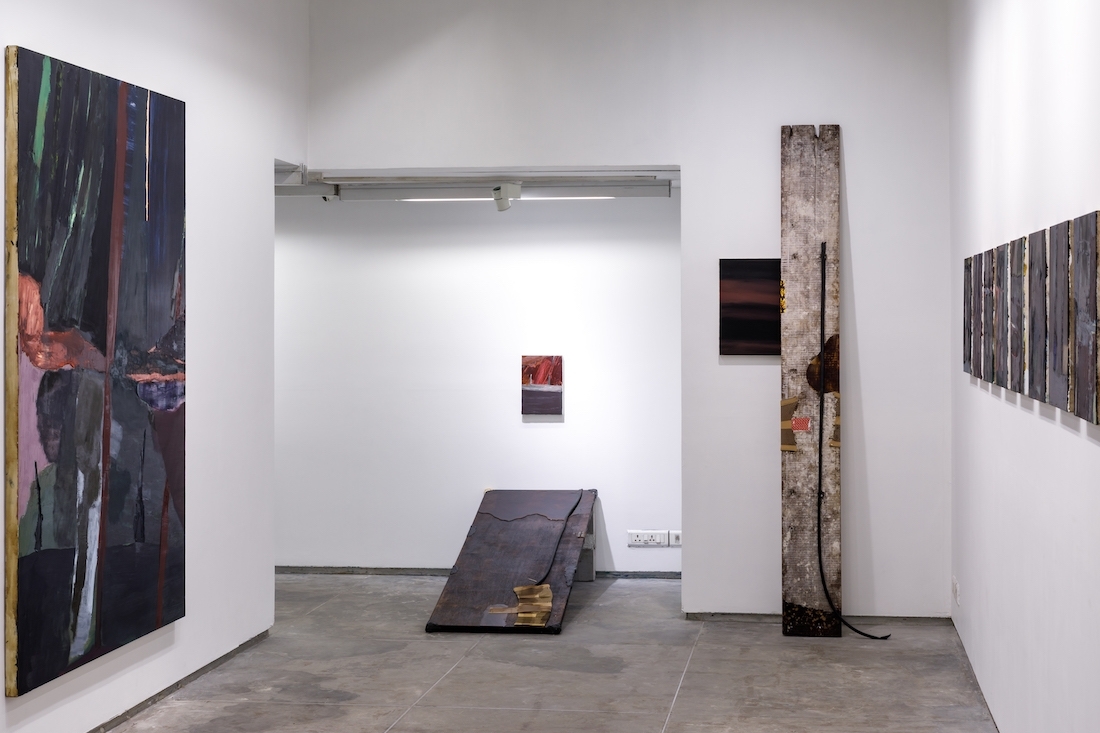

Meet Biraaj Dodiya who is ready to present her debut solo, Stone is a Forehead. The title of the exhibition is a reference to The Laid Out Body - a part of the poem Lament for Ignacio Sanchez Mejias by Federico García Lorca commemorating the death of a friend.
Referring to personal memory, loss and coming of age, the body of work takes the form of a lament; bringing together signifiers of youth and mortality, discomfort and relief, absence and distance through paintings and sculptures. The works in the exhibition explore stages of material proposition and cancellation. Like an excavation site, they are a result of processes of breakdown and repair, much like the urgent recalling of moments of crisis.

The process of applying paint, scraping it off and slapping it on becomes undecipherable and refers to moments where sequences of events are a blur and not chronological. The sculptures, take the form of ramps and beams - structural elements commonly used as aids for supporting or opposing weight. Abstract forms combine with discarded objects, and personal relics, becoming signposts of an interior life. Materials and surfaces seem to communicate with each other allowing exchanges between the found and the made, and simultaneously playing with perception of weight. The paintings, part funereal abstractions, part nocturnal landscapes, are primarily studies of uncertainty and distance. Moments of abrasion and resistance are hinged from slivers of light, balancing movement and stasis, form and vision.
Dodiya is interested in metaphors that develop through modes of making, where erasure of meaning becomes a process of negotiating with time. Stone becomes a forehead, paint becomes revocation, rubber becomes skin or blood or sweat or a pool of dirty rainwater from many monsoons ago. Lodged between memory and traversing shifting emotions of forfeiture, Stone is a Forehead reveals a nuanced practice, navigating a space between the inner self and trepidation of precarious moments of personal loss.
Fragile and often discarded material becomes a crucial starting point for the work—a metaphor, a tomb and a reminder of life’s impermanence.’
BIOGRAPHY
Biraaj Dodiya [b. 1993] received her MFA from New York University in 2018, and BFA from the School of the Art, Institute of Chicago in 2015. Selected exhibitions include Burn your finger, And kiss it yourself [2017] at 80WSE, New York, Send Your Location [2017] at 33 Orchard, New York. Dodiya is the recipient of the 2018 Jack Goodman Scholarship in Art and Technology, finalist of the 2016 Luminarts Cultural Foundation’s Visual Arts Fellowship, and was nominated for the 2018 Dedalus Foundation MFA.